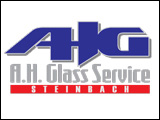The Canadian Pork Council says a national swine traceability system will provide management benefits beyond tracking the movement of pigs.
The Canadian Pork Council is coordinating the creation of the swine component of a national multi-species livestock traceability system.
CPC manager of national traceability Jeff Clark explains Pig Trace includes four main components, premise identification which is identifying the location where animals are raised housed or disposed of, market tattoos and slaughter movement reporting which go hand in hand, individual ID of breeding animals which involves ear tags and movement reporting which ties the system together.
Premise identification was an initiative that we took up collectively right across Canada through our provincial pork offices back in 2006.
We have about 90 percent of our premises registered and it is the provincial government’s responsibility to do premises registration for all commodities now but we did take an industry lead and that tied in with our market tattoo.
We reissued market tattoos so they were premises specific.
Those are used for slaughter movements so that way if there’s an issue found at a packing plant the tattoo will trace right back to the farm of last residence.
The individual ID and ear tags is something very new.
We made those available in October 2009 and our intention there is to start tagging all incoming breeding animals, gilts and boars, with the new tags so we can start to roll over the herd as replacement animals come in.
The movement reporting portion, that means premise to premise movement reporting where if you’re moving animals you have to report certain key information.
That hasn’t begin yet.
We’re hoping to do some early trials and early adoption projects this year in 2010.
Clark says traceability is about crisis management related to foreign animal disease and food safety but the system will provide multi use tools that will assist producers with their own production as well.
Source: Farmscape.Ca



